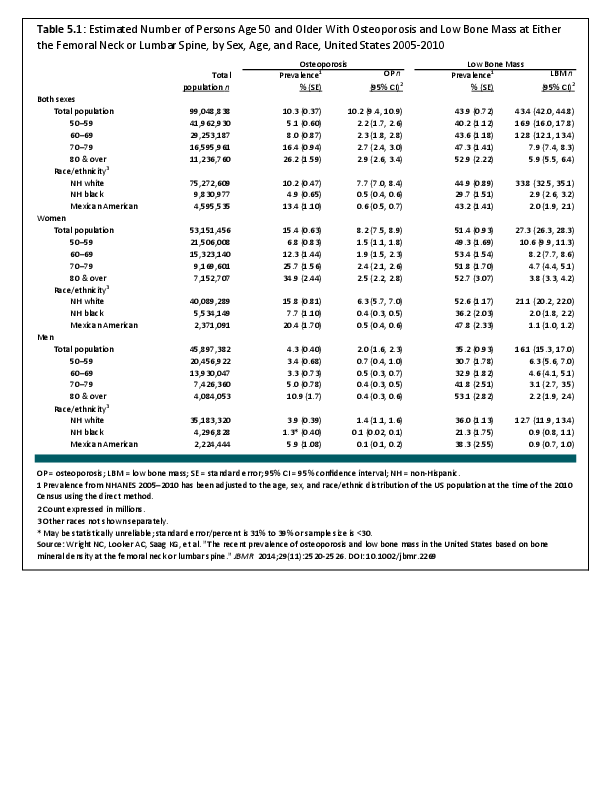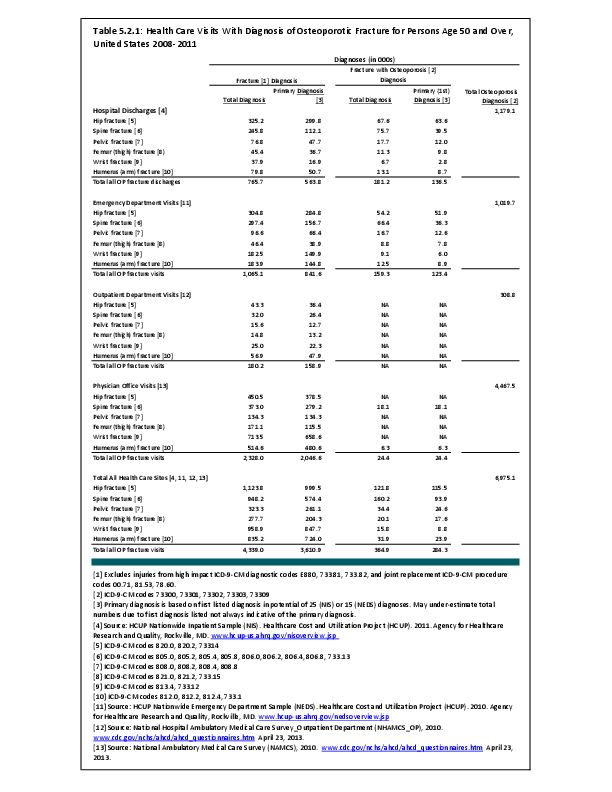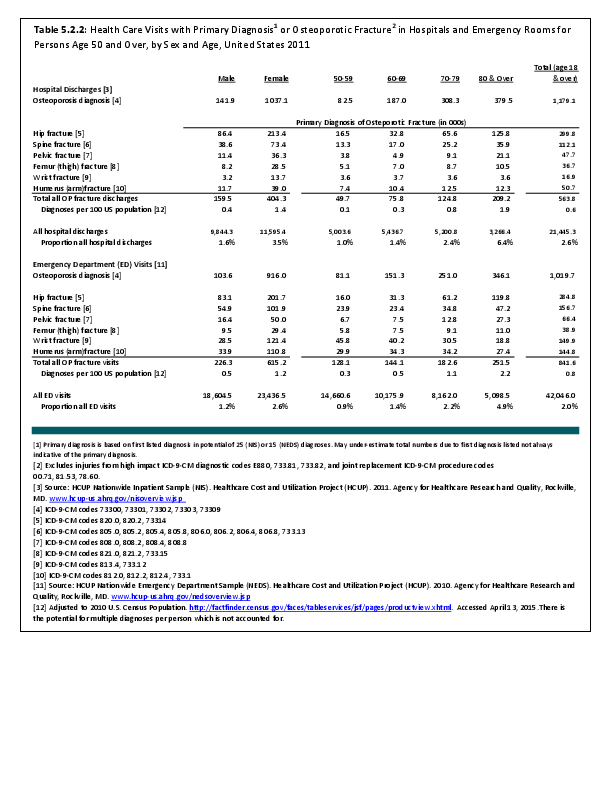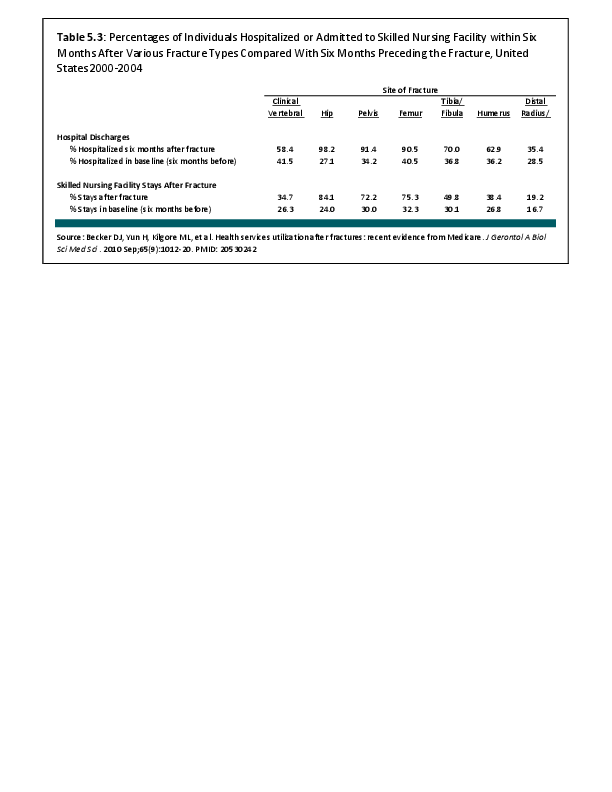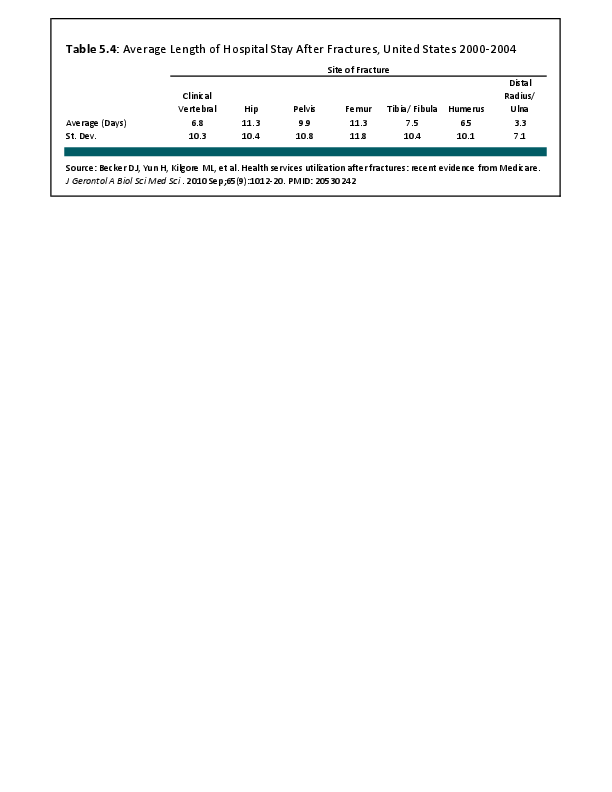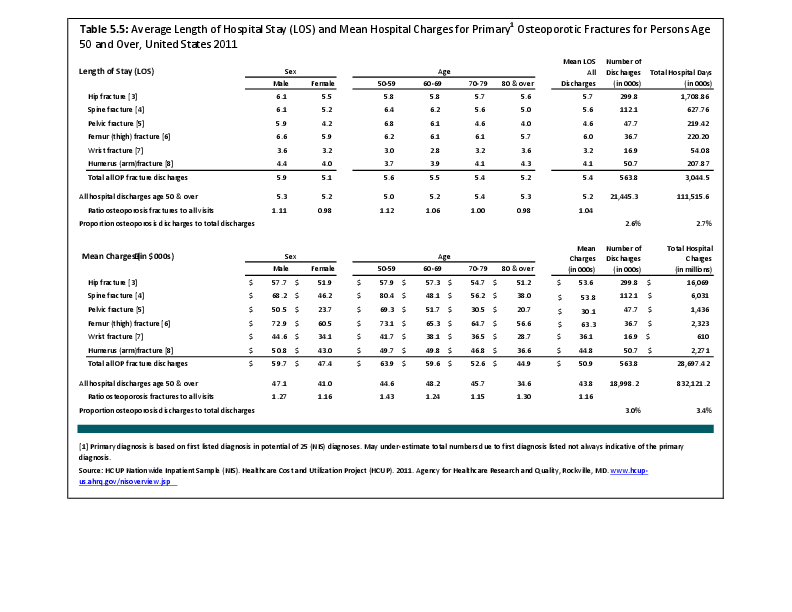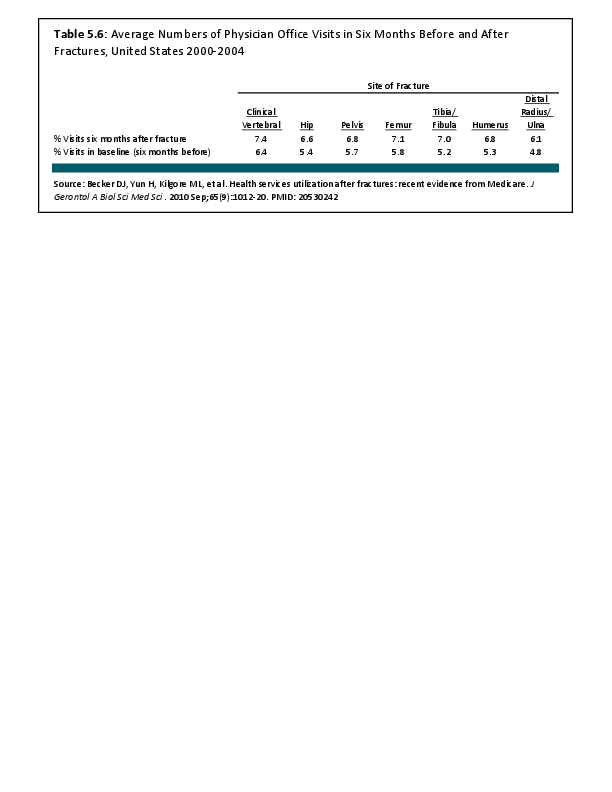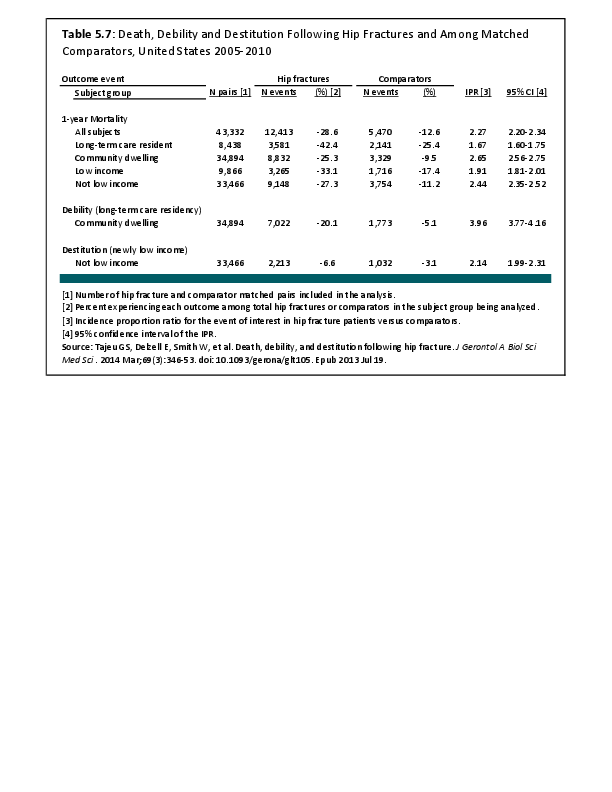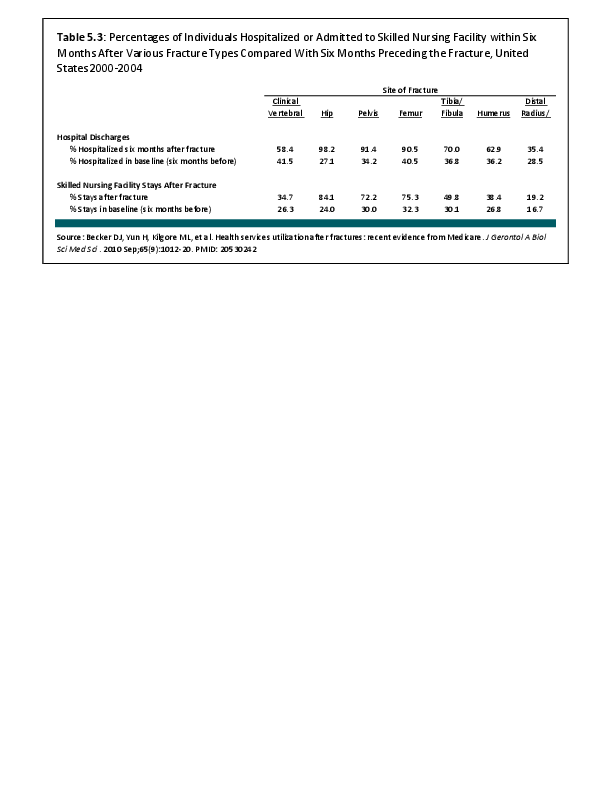Serious adverse outcomes following hip fractures include mortality, debility requiring institutional care, and destitution (poverty) sufficient to qualify for Medicaid enrollment. In a recent study of Medicare beneficiaries, the population age 65 years and older, individuals experiencing hip fracture had more than double the risk of death, an almost four-fold increased risk of becoming a nursing home resident, and more than double the risk of enrolling in Medicaid within one year of the fracture.1 (Reference Table 5.7 PDF CSV)
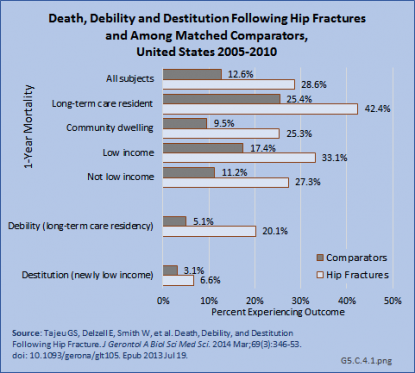
Two recent studies of the Medicare population support a significant decline in mortality from hip fractures in recent years, with reported mortality rates of 22%2 and 30%3 in the first year following fracture. However, hip fracture remains a major mortality risk 2- to 8-fold higher than non-hip-fracture matched controls.3
- 1. Tajeu GS, Delzell E, Smith W, et al.: Death, debility, and destitution following hip fracture. J Gerontol A Biol Sci Med Sci 2014 Mar;69(3):346-353. PMID: 23873945
- 2. Lo JC, Srinivasan S, Chandra M: Trends in mortality following hip fracture in older women. Am J Manag Care 2015;21(3):e206-e214. Published online: April 15, 2015.
- 3. a. b. Brauer CA, Coca-Perraillon M, Cutler DM, Rosen AB: Incidence and mortality of hip fractures in the United States. JAMA 2009;302(14):1573-1579. doi: 10.1001/jama.2009.1462.
Edition:
- 2014

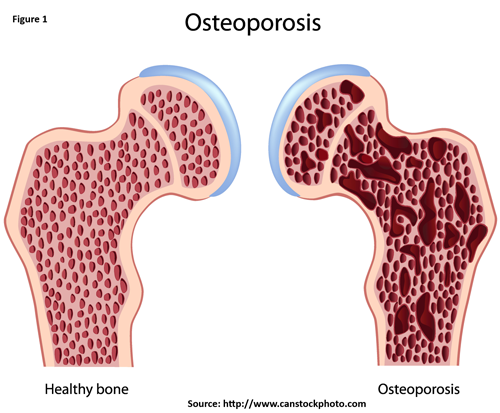
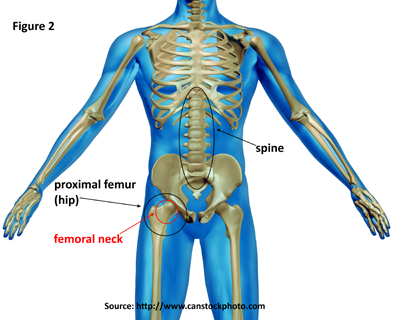
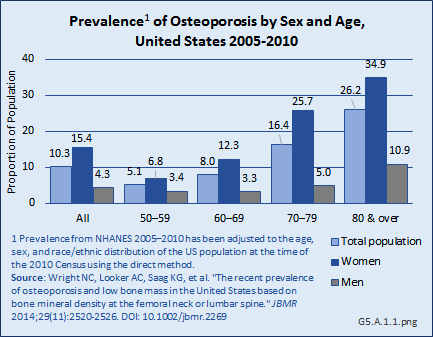
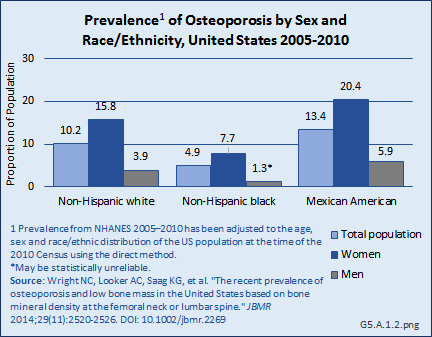
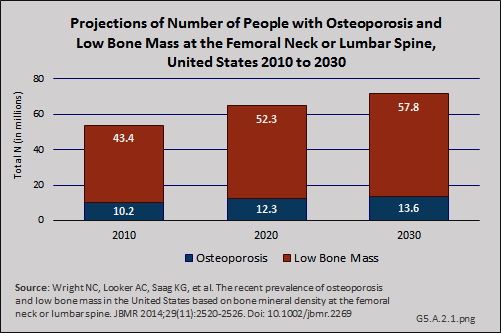
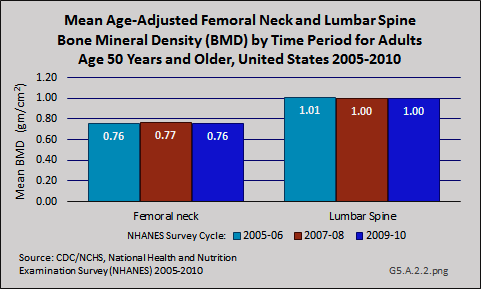
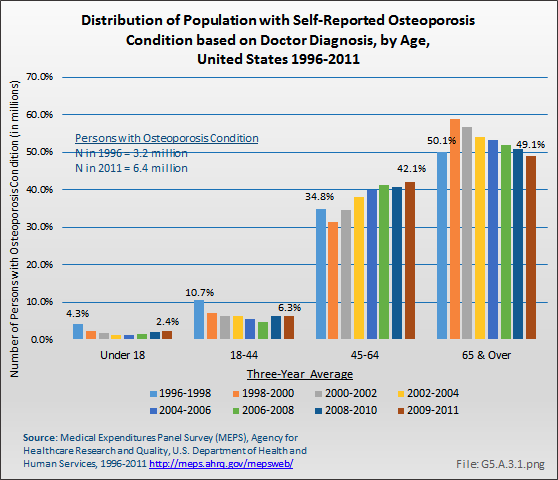
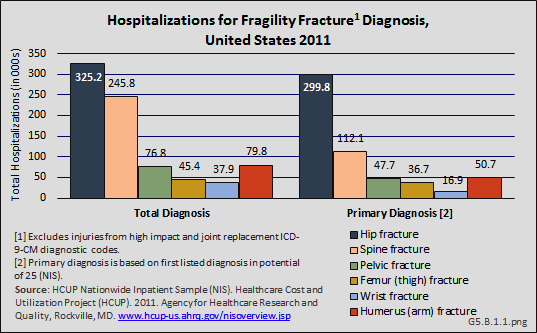
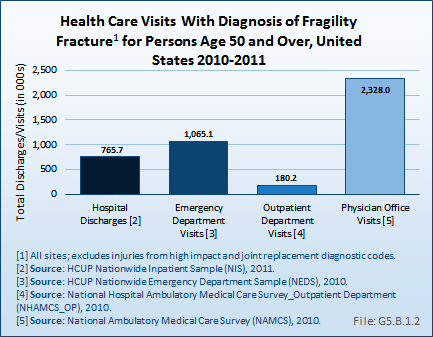
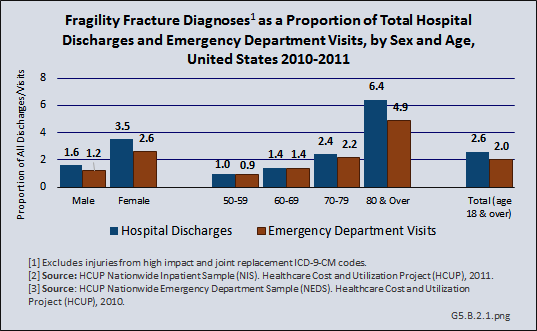
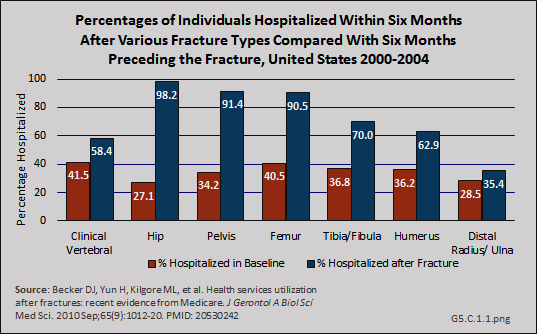
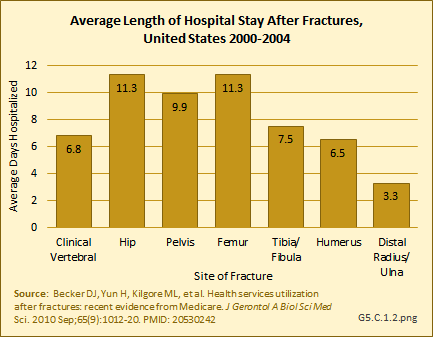
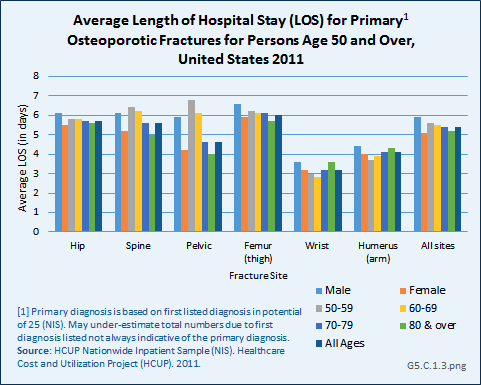
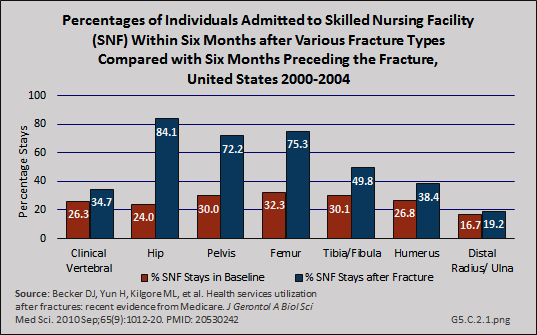
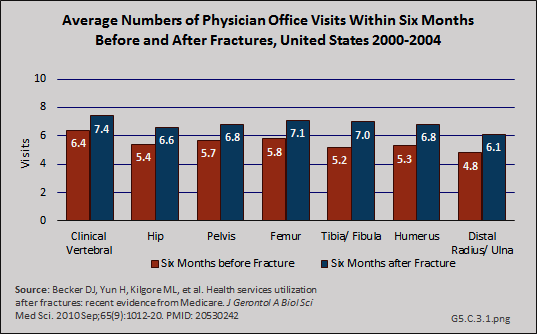
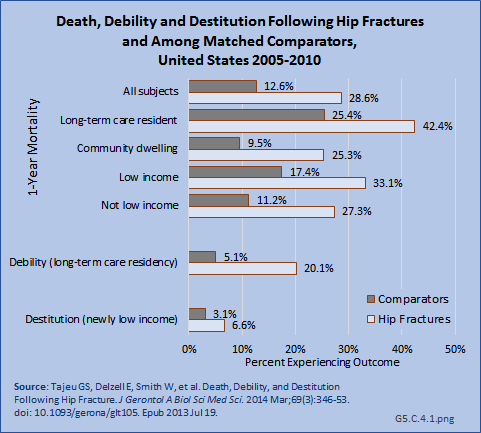
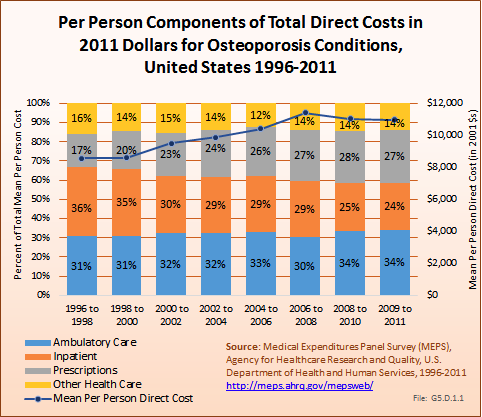
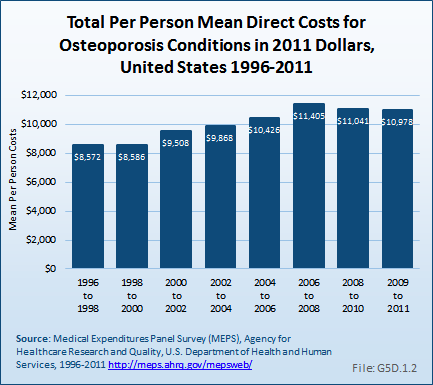
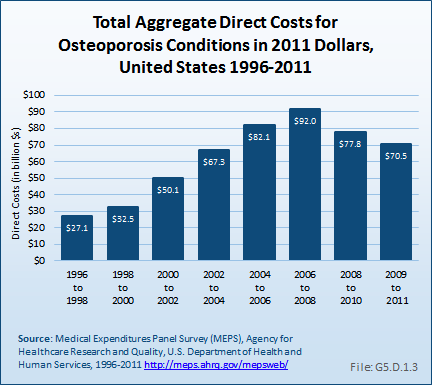
 Download as CSV
Download as CSV